|
|
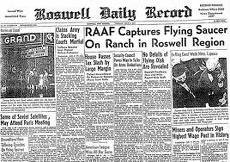
There are many excellent books giving an account of the Roswell incident. There is also a lot of good information all over the net.
The following, however, is a good overview, and explains who most of the key players are.
This includes eyewitnesses, authors, and debunkers, who you will see mentioned in many of the articles on Roswell.
I believe Roswell is a REAL case of a recovered crashed UFO and it's occupants by our Military. The "OFFICIAL" reports have gone from a crashed UFO, to weather balloon at the time in 1947, to a Mogul spy balloon in 1994, to an incredulous tale about test dummies being dropped nearly 10 years AFTER the crash accounting for the reports of alien creatures being recovered!
When you couple this with all the other cover-ups the Government has engaged in, Watergate to mention just one in a long list, how can anyone possibly believe the Government is telling the truth? Never mind all the evidence and eye witness testimony saying this WAS a crash of a UFO.
A mysterious crash, dead extraterrestrials littering the landscape, a government cover-up. Today the incident near Roswell, N.M is an elaborate tale, growing ever more so with time and mythic imagination. But when it happened, it was almost imperceptible.
The wreckage was strewn over a 200-yd. swath and consisted largely of rubber strips, tinfoil, wood sticks, Scotch tape, other tape with a floral design and what rancher W.W. ("Mac") Brazel described as a rather tough paper. On the day Brazel chanced upon the strange debris, June 14, 1947, he was making his rounds at the J.B. Foster sheep ranch, 85 miles northwest of Roswell. As he later recalled, he was in a hurry and didn't pay much attention to the scattered assortment.
Ten days after Brazel's chance discovery, pilot Kenneth Arnold was flying near Washington State's Cascade Mountains when he spotted what he described as nine dislike objects flying in formation at about 1,200 m.p.h. Arnold's report, yet unexplained, immediately gave rise to other sightings, and by July 4, newspapers were heralding literally hundreds of reports of "flying saucers" in skies across the nation.
But Brazel had no radio in his ranch shack and was unaware of the sightings until July 5, when he drove to the nearby town of Corona, heard about the saucers and may have learned of a rumored reward for anyone who recovered one. By then, Brazel later told the Roswell Daily Record, he had already returned to the littered field with his wife and two children, gathered the debris and taken it home. On July 7, while in Roswell to sell wool, Brazel dropped by the office of Sheriff George Wilcox, where, he recalled, he "whispered kinda confidential-like" that he might have found a flying disk. Sheriff Wilcox immediately phoned nearby Roswell Army Air Field, home of the 509th Bomb Group, and notified Major Jesse Marcel, the group intelligence officer.
Barely able to control his excitement, Marcel sped into town with counterintelligence corps officer Sheridan Cavitt, picked up Brazel and headed out to the ranch. After collecting the debris--which Brazel later reported weighed no more than 5 lbs.--they stowed it in the trunk of Marcel's Buick. On his way back to Roswell, Marcel stopped at his home to show off the booty. Marcel's son Jesse Jr., now 60 and a doctor in Helena, Mont., remembers being awakened by his father and shown tinfoil, plastic, "beams or struts" that seemed metallic, and some strange markings that he thought resembled "hieroglyphics." The younger Marcel was only 10 at the time, but, he told TIME , he recalls that his father "was pretty excited, and I kind of think he said 'flying saucers.'"
That is most likely the description Major Marcel used when he returned to the airfield. As Walter Haut, who was then the 509th's press officer, tells it, he was ordered by Colonel William Blanchard, the group commander, to issue a press release. Haut, now 75 (he and his wife have license plates that read MR UFO and MRS UFO), remembers Blanchard's saying, "We have in our possession a flying saucer. This thing crashed north of Roswell, and we've shipped it all to General Ramey, 8th Air Force at Fort Worth."
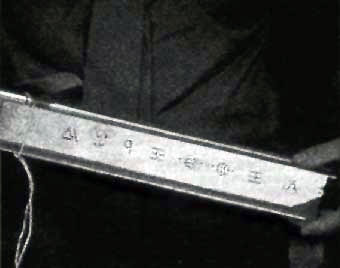
Haut's press release caused a sensation. RAAF CAPTURES FLYING SAUCER ON RANCH IN ROSWELL REGION, proclaimed the Roswell Daily Record on July 8. Word of the "capture" quickly spread, and the phone lines in the offices of Sheriff Wilcox and First Lieut. Haut were jammed for hours with press inquiries from around the world.
The furor was short-lived. At 8th Air Force headquarters the same night, Brigadier General Roger Ramey, after consultations with his weather forecaster, Warrant Officer Irving Newton, called in the local press and announced that the debris was the remnants not of a saucer but of a high-altitude weather balloon. The sticks and tinfoil, he explained, were from a reflector used to track the balloon by radar. The next day, under the headline GENERAL RAMEY EMPTIES ROSWELL SAUCER, the Daily Record reported his retraction and explanation. In the same edition, the paper quoted rancher Brazel, overwhelmed by the uproar and embarrassed: "If I find anything else besides a bomb they are going to have a hard time getting me to say anything about it." Tranquility returned to Roswell, and three decades would pass before any more excitement was stirred.
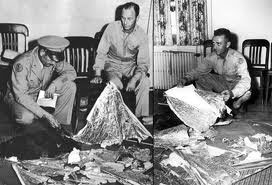
Enter Stanton Friedman, a former itinerant nuclear physicist now living in New Brunswick, Canada, who has long been, in his words, "a clear-cut, unambiguous UFOlogist." In 1978, while waiting in a Baton Rouge, La., television station for an interview, Friedman was told that Jesse Marcel, long retired from the Air Force and living nearby, had once handled the wreckage of a UFO. After quizzing Marcel, who still believed the debris he retrieved was extraterrestrial, Friedman reviewed the old stories about Roswell, painstakingly sought out and interviewed other witnesses, and came to a dramatic conclusion: there had been a cover-up of "cosmic Watergate" proportions. His research and conclusions became the basis of the 1980 book The Roswell Incident, co-written by Charles Berlitz (author of The Bermuda Triangle) and UFO investigator William Moore. Its publication put Roswell back on the map.
Mentioned briefly in the book was a yarn, told secondhand to Friedman by a couple that attended one of his lectures in 1972. They claimed that a friend named Grady ("Barney") Barnett, now dead, had told them about coming upon a crashed saucer on the Plains of San Agustin, N.M about 150 miles west of the Foster ranch, in 1947. Before being shooed away by military police, he claimed, he had spotted several little bodies strewn nearby. Since the story had no apparent connection to Roswell and was given scant credence by Friedman and the authors, it was generally ignored. Yet it was the UFO era's first mention of alien casualties.
But not the last. In 1988, responding to the continuing speculation about Roswell, the Center for UFO Studies (CUFOS) in Chicago sponsored a team to seek out the crash site, recover any remaining debris and interview surviving "witnesses." Three years later the key members of that team, science-fiction author Kevin Randle and CUFOS investigator Don Schmitt, published their conclusions in the book UFO Crash at Roswell. In addition to recovering a UFO at Roswell, they charged, the government had found and spirited away the remnants of its crew, several little alien bodies.
Randle and Schmitt bolstered their tale with accounts by Roswell witnesses, some of who had earlier been ferreted out and interviewed by Friedman. The most notable of their sources was Glenn Dennis, who in 1947 was 22 and working as a mortician. Dennis told of receiving inquiries from the air base that July about the availability of child-size coffins and procedures for embalming bodies that had been exposed to the weather for days.
Even more intriguing, he claimed that he had seen strange activity at the base hospital early in July and had been ordered to leave after encountering a hysterical Army nurse, who later told him she had aided doctors performing autopsies on strange-looking, small bodies. The nurse, he added, had sworn him to secrecy and had been transferred to England, and flown out of the base shortly after they spoke. Later, he said, he heard that she had been killed in a plane crash.
Dennis, who still lives near Roswell, claims that until 1990, the only person he ever told about the strange goings-on was his father. Why? "I didn't want to get mixed up in this mess."
Friedman, meanwhile, was pursuing a new lead. His preoccupation with UFOs had landed him a stint as adviser for a 1989 episode of the TV show Unsolved Mysteries that dealt with Roswell and other purported UFO crashes, including the one that ostensibly occurred in 1947 on the Plains of San Agustin. One viewer of that show, Gerald Anderson, responded quickly to an 800 number flashed on the screen, protesting that the re-enactment of the event was inaccurate. For one thing, he told the operator, the shape of the crashed spacecraft was wrong. And how did he know? Anderson, now a resident of Springfield, Mo., explained that he moved to New Mexico with his family in 1947, when he was five, and that on a rock-hunting outing on the Plains of San Agustin, the group had come across the wrecked craft.
Friedman was ecstatic. This seemed to be solid confirmation of the story casually mentioned in The Roswell Incident. He arranged to have John Carpenter, a Springfield therapist, interview Anderson. Carpenter, who also directed investigations for the local chapter of MUFON, the Mutual UFO Network, conducted several sessions with Anderson, often using hypnosis, presumably to help him "recover" buried memories of the event. Anderson later told the Springfield News-Leader: "We all went up ...to it [a large silver disk]. There were three creatures, three bodies, lying on the ground underneath this thing in the shade. Two weren't moving, and the third one obviously was having trouble breathing, like when you have broken ribs. There was a fourth one [that]...apparently had been giving first aid to the others." Soon after, Anderson claimed, the military arrived, warned everyone to forget what they had seen and "unceremoniously ushered" the civilians away from the site. And why hadn't Anderson ever told his story before? As he grew into manhood, he explains, he "tucked" away the memory. "I learned you just don't go up to the average person on the street and say, 'Damn, know what I saw?'"
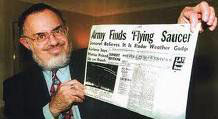
Armed with his new evidence, Friedman and UFO researcher Don Berliner co-authored their own book, Crash at Corona, in 1992. Their conclusion: the government recovered not one but two saucers in July 1947, along with seven dead extraterrestrials and one that was still alive. The first craft, they claimed, crashed near Corona after some kind of midair accident that showered debris on the Foster ranch. And the second, they wrote, was surely the one Anderson saw.
In their 1994 sequel, The Truth About the UFO Crash at Roswell, Randle and Schmitt introduced still more people they called witnesses. One was Roswell resident Frank Kaufman (called Steve MacKenzie in the book because he initially preferred anonymity). He maintained that he was part of a military contingent that had searched for a crashed saucer and, 40 miles south of the Foster sheep ranch, had discovered a craft shaped like a plane fuselage, its nose buried in a sandy hill. Through a cracked section, he insisted, he saw several little bodies.
Another tale was told by a Carlsbad, N.M., resident, Jim Ragsdale, who said he and a woman friend, camping out in an area north of Roswell during the Fourth of July weekend in 1947, were amorously involved one night when they saw an object flash overhead and crash not far away. Seeking out the wreck, he said, they discovered a crashed saucer and, using a flashlight, spotted several little corpses. They returned in the morning to get a better look but beat a hasty retreat when they saw a military convoy approaching.
Roswell researchers agree that something happened out there, but they are a rancorous bunch, given to ferocious infighting. Collaborators become enemies, one calls another a "pathological liar," another attempts to block publication of a rival's book, and they relish discrediting each other's witnesses. The bête noire of the Roswell community is a former Aviation Week senior editor named Philip Klass, who now publishes the Skeptics' UFO Newsletter, a bimonthly that regularly exposes duplicity and deflates UFO claims. Roswell believers are hard pressed, for example, to counter Klass's point that while they argue about whether the crash date was July 2 or July 4, Brazel reported unequivocally that he discovered the debris on June 14. Klass has constantly quoted secret documents, recently released under the Freedom of Information Act, showing that well after the Roswell incident, the nation's top security officials were still seeking physical evidence--any evidence--that UFOs are real.
Minutes of an Air Force Scientific Advisory Board meeting convened on March 17, 1948, for example, quote Colonel Howard McCoy, then chief of intelligence at what is now the Wright Patterson Air Force Base (where the bodies and debris were supposedly shipped): "We are running down every [UFO] report. I can't even tell you how much we would give to have one of the example, quote Colonel Howard McCoy, then chief of intelligence at what is now the Wright Patterson Air Force Base (where the bodies and debris were supposedly shipped): "We are running down every [UFO] report. I can't even tell you how much we would give to have one of these crash in an area."
Still, as the Roswell controversy becomes more heated, Washington has been under increasing pressure to resolve it. At the urging of New Mexico Representative Steven Schiff, who complained about a government "cover-up" of Roswell and the "runaround" he was getting from the Pentagon, the General Accounting Office announced in January 1994 that it would launch a hunt for any documents related to the "incident." That announcement was noted in the Washington Post under the headline "GAO Turns to Alien Turf in Probe: Bodies of space voyagers said to have disappeared in 1947."
Stung by the publicity, the Air Force reacted defensively. It promptly began a six-month investigation of its own, and released its report the following July. The Air Force investigators, under Colonel Richard Weaver, interviewed the surviving firsthand witnesses to the debris recovery, searched records and followed leads that brought them to Charles Moore, a scientist who in 1947 was working on the then top-secret Project Mogul.
Mogul, Moore explained, involved launching trains of balloons that carried acoustical equipment designed to monitor Soviet nuclear tests. So that the balloons could be tracked by radar, they were equipped with corner reflectors. Records showed that one such balloon train was launched on June 4 and was tracked to within 20 miles of the Foster ranch before it disappeared from the radarscopes in mid-June. Even more telling, Moore reported, the corner reflectors were put together with beams made of balsa wood and coated with "Elmer's-type" glue (to strengthen them). Also, he noted, the New York toy company that manufactured the reflectors had reinforced the seams with leftover tape that Moore recalled had "pinkish-purple abstract flower-like designs"--markings that Major Marcel could have interpreted as hieroglyphics.
Finally, the Air Force report stated, "there was no indication in official records from the [1947] period that there was heightened military operational or security activity which should have been generated if this was, in fact, the first recovery of materials and/or persons from another world." The GAO probe, released in 1995, reported much the same conclusion.
Perhaps even more disturbing to Roswell buffs was "Roswell in Perspective," an article in the publication of the Fund for UFO Research. That report was the product of a two-year investigation by Karl Pflock, who, after a career that included stints in the CIA and the Pentagon, resigned to become a full-time UFO investigator and writer.
Pflock, who still believes that some UFOs are extraterrestrial, nonetheless diligently pursued leads and helped uncover the Charles Moore revelations. Pflock also found gaping holes in the testimony of such "witnesses" as Frank Kaufman and Jim Ragsdale. Pflock's conclusion: "It is all but certain that at least the great majority, if not all, of what was found at the debris field on the Foster ranch" was the wreckage of a Project Mogul balloon.
Still another recent defector from the ranks of the hopeful is Kent Jeffrey, a Delta Air Lines pilot and UFO buff best known for his "Roswell Declaration," a petition urging the Federal Government to promptly release all documents pertaining to Roswell.
Because his father had known Colonel Blanchard of the 509th Bomb Command, Jeffrey was able to wangle an invitation to the 1996 reunion of the 509th. There he met pilots stationed at Roswell in 1947, most of whom, he found, had "heard nothing about the supposed crashed-saucer incident until years later, after all the publicity started." After chasing down other sources suggested by 509th pilots, Jeffrey was convinced. "In essence," he says, "the 1947 Roswell case has turned out to be a red herring, diverting time and resources away from research into the real UFO phenomenon."
Late in June '97, coincidentally just before the 50th anniversary celebrations were to begin, the Air Force released the results of its second study, launched after UFOlogists complained that its 1994 report did not address the issue of alien bodies. ("It seemed rational to us," explains the Air Force's Weaver, "that since we proved there were no UFOs, it automatically meant no aliens.")
For a few years after 1947, the report explained, the Air Force conducted experiments that involved dropping dummies from high-altitude balloons to study the results of the impact. Witnesses' descriptions of the "aliens," the Air Force notes, closely match the characteristics of the dummies: 3 1/2 ft. to 4 ft. tall, bluish skin coloration and no ears, hair, eyebrows or eyelashes.
"What quite likely happened," says Weaver, "is that people who saw these dummies mistook them for aliens." And, he notes, because no mention of aliens was made until 1978, those "who were interviewed were trying to recall events that took place 30 years earlier." Weaver blames UFOlogists for "linking" these sightings, which occurred after 1947, to the original Roswell incident.
Despite the Air Force reports, despite Pflock and Jeffrey, Roswell believers remain unshaken. "If you can't attack the data," Friedman says, "attack the people by saying they are nuts, kooks, quacks ... The evidence is overwhelming," he insists, "that planet Earth is being visited by extraterrestrial life."
The legend of Roswell will doubtless go on and on.
--Reported by James Willwerth/Roswell, Elaine Rivera/New York and Chandrani Ghosh/Washington
Credit: www.v-j-enterprises.com/rosmetal.html
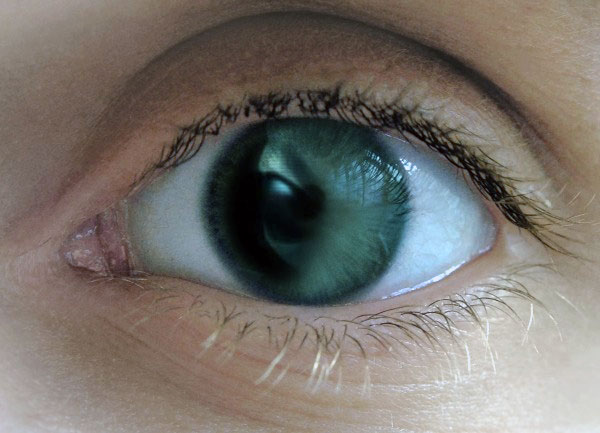
The UFO Times
"Eye in the Sky"
...................................................
I Know What I Saw
Alphabetical Listing Of Those Involved In The Roswell Incident
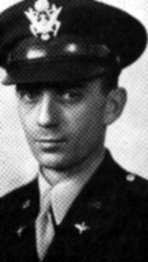
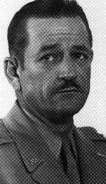

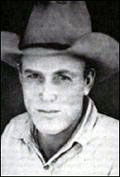


Armstrong, Captain - Collected pieces of the crash from the Brazel's two years after the crash
Barnett, Grady L. "Barney" - Claimed to have found wreckage and bodies on the Plains of San Agustin, about 120 miles from where Mac Brazel found wreckage.
Barrowclough, Lt. Colonel Robert - Executive Officer of Roswell Army Air Field, Roswell, New Mexico.
Blanchard, Colonel William - Commander, 509th Bomb Group, Roswell Army Air Field. Upon seeing the material collected at the site by Major Jesse A. Marcel, he ordered the roads leading to the crash site blocked, and later made a special trip to the site.
Brazel, W.W. "Mac" - Foreman at the Foster ranch in Lincoln County, near Corona, New Mexico. He found the crash site on the ranch.
Brazel, Bill - Son of Mac Brazel and a major witness.
Briley, Lt. Colonel Joe - In mid-July, 1947 he became the Operations Officer at Roswell Army Air Base.
Brown, Dr. Jerry - NASA engineer who had worked at White Sands Missile Range. He speculated that the metal found was Duraluminum alloy or a V-2 rocket.
Brown, Sergeant Melvin E. - Was at the second site, guarding the truck containing alien bodies. He also guarded the hanger at Roswell Army air Field while crates from the site were held there.
Chavez, Senator Dennis - US Senator from New Mexico. He supposedly called Walter Whitmore, Sr. and suggested that he not air the recorded interview with Mac Brazel.
Clark, Deputy, B.A. - Took the initial report from Mac Brazel at the Chaves County sheriff's office.
Crain, June - Worked at Wright Patterson Air Base with top secret clearance and handled material from craft.
Dubose, Colonel Thomas J. - Chief of Staff to Brigadier General Roger Ramey. He was photographed in Ramey's office with the "debris."
Easley, Major Edwin D. - Provost Marshal in charge of the troops clearing the crash site.
Foster, Iris - Owned a cafe in Taos, New Mexico. She often heard a man call "Cactus Jack," an amateur archeologist, talk about seeing a downed alien ship.
Gardner, Mary Ann - Nurse at St. Petersburg Hospital, Florida. She heard an archeologist on her deathbed tell about discovering an alien ship and bodies.
Gardner, Norma - Typist with top security clearance at Wright-Patterson Air Force Base. She typed autopsy reports on alien beings and saw two bodies.
Haut, 1st Lieutenant Walter - Public Information Officer at Roswell Army Air Field. He was ordered by Colonel Blanchard to issue a press release stating that a flying disc had been recovered.
Henderson, Captain Oliver W. "Pappy" - Member, First Air Transport Unit, Roswell Army Air Field, and co-pilot of the first B-29 flight from Roswell to Fort Worth. He also was the pilot of a C-54 flight carrying wreckage from Roswell to Wright-Patterson Field, Dayton, Ohio.
Henderson, Sappho - Wife of Pappy Henderson. She was told by her husband that he had flown the C-54 to Wright Field.
Jennings, Colonel Payne - Deputy base and group commander at Roswell Army Air Field. He was the pilot of the first B-29 flight from Roswell to Fort Worth.
Johnson, J. Bond - Staff reporter for the "Fort Worth Star Telegram." He took photographs of the "wreckage" in General Ramey's office.
Joyce, Frank - Reporter and announcer for Roswell radio station KGFL. He interviewed Mac Brazel on the telephone before the military arrived and later told a different story.
Kaufman, Frank - Friend of Warrant Officer Robert Thomas. He said the bodies were sealed in a wooden crate, while still at the hospital.
Lapaz, Dr. Lincoln - Expert in meteorites; degrees in mathematics and astronomy. He was called in to investigate the crash site.
Maltais, L.W. "Vern" - Said Barney Barnett had told him he had seen bodies in one- piece grey suits, after which archaeologists and the military arrived.
Marcel, Major Jesse A. - Intelligence Officer at Roswell Army Air Field, 509th Bomb Group Intelligence Office. He picked up material at the ranch and later flew it to Fort Worth Army Air Field.
Marcel, Jesse Jr. - Son of Jesse A. Marcel. He saw debris samples that his father brought home and, under hypnosis, was able to recall the designs marking the I-beam.
McBoyle, Johnny - Station Manager of radio station KSWS, Roswell, New Mexico. He attempted to put the Roswell story out over the wire.
McGuire, Phyllis - Daughter of Sheriff George A. Wilcox. She saw the military arrive very soon after he father called them.
McQuiddy, Art - Editor "Roswell Morning Dispatch". Walter Hunt delivered a press release to him, which other military personnel later tried to retrieve.
Newton, Warrant Office Irving - Weather officer at Fort Worth Army Air Field. He was ordered to General Ramey's office to identify the "wreckage." a Rawin target balloon.
Parker, Jim - Ranch hand of Mac Brazel's. His some came home from school one day in 1988 reported an Air Force truck in the area.
Payne, Bud - Neighbor of Mac Brazel. He had gotten thrown off the Foster ranch by the military while chasing a stray cow. He knew exactly where the crash site was.
Porter, Sergeant Robert - Crewman on the B-29 that flow packages from Roswell Army Air Field to Fort Worth Army Air Field. He claims that Jesse Marcel was on the flight.
Proctor, Floyd - Mac Brazel's nearest neighbor and husband of Loretta Proctor. Brazel came to their house to show them a piece of the metal.
Proctor, Loretta - Mac Brazel's nearest Neighbor and wife of Floyd Proctor. She said she remembers her husband trying to whittle on the metal but failing to make a mark.
Proctor, Timothy D. - Son of Floyd and Loretta Proctor. He found the crash site with Mac Brazel.
Ramey, Brigadier General Roger - Commander, eight Air Force, of which the 509th Bomb Group was a part.
Rickett, Lewis S. - Army counter-intelligence (CIC) agent, who assisted in the retrieval of debris from the crash site.
Roberts, Jud - Minority owner of radio station KGFL, Roswell, New Mexico. He said the military picked up copies of Haut's press release from the media there.
Shirkey, Robert - Saw wreckage taken by eight or nine men through the Operations Building at Roswell Army Air Field.
Sleepy, Lydia - Secretary to Merle Tucker in Albuquerque, New Mexico. She was ordered over the telephone to stop transmitting the crash story.
Smith, Sergeant Robert E. - Member of the First Air Transport Unit at Roswell Army Air Field. He spent an entire day loading three aircraft with the material from the crash site.
Strickland, Lymann - Neighbor of Mac Brazel. He saw Brazel in Roswell being escorted out of the newspaper offices by three military officers.
Strickland, Marian - Neighbor of Mac Brazel, wife of Lymann Strickland. An upset Brazel visited them after his release from custody at Roswell Army Air Field.
Thomas, Robert - Warrant Officer who came in on a special flight to assist in recovery of debris.
Tucker, Merle - Owner of several New Mexico radio stations. He arrived back from out of town to find that his Roswell station manager had tried to put the crash story out over the wire.
Tyree, Tommy - Hand for Mac Brazel. He began to work about one month after the crash and remembers that Brazel was irritated because the sheep would not cross the debris field and had to be driven the long way around to water.
Whitmore, Walter Sr. - Majority owner of radio station KGFL in Roswell, New Mexico. He hid Mac Brazel from the Military.
Wilcox, Sheriff George A. - Sheriff of Chaves County, in which Roswell is located. Mac Brazel showed him a piece of the debris and he suggested Brazel contact the military.
Wilmot, Dan - Resident of Roswell, N.M. He and his wife saw an oval- shaped object fly over their house on July 2, 1947, the probable date of the crash.
Zorn, Vernon D. - Non-commissioned officer in charge of the Third Photo Unit at Roswell Army